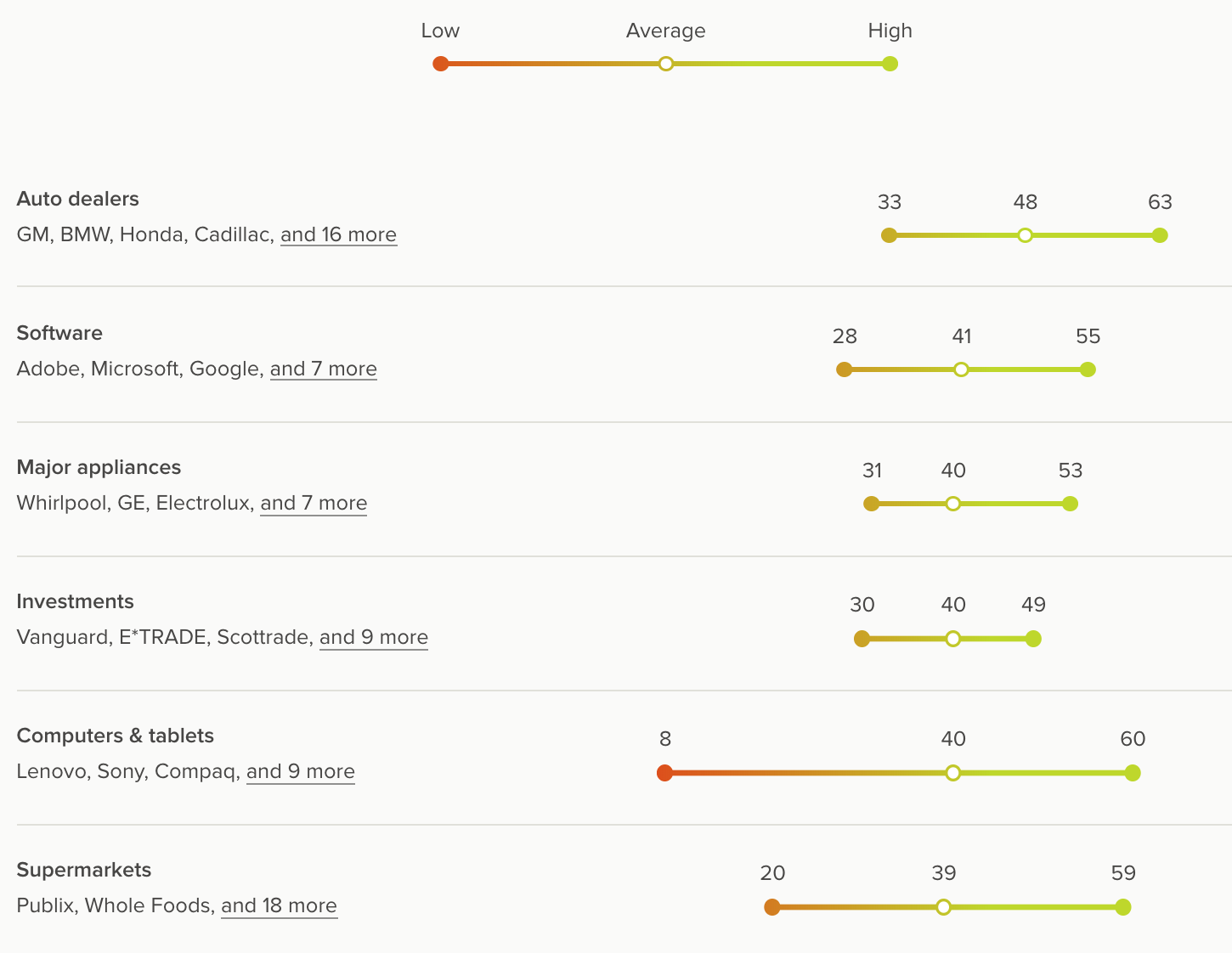NOTE: This post is intended as a prelude to Nimble NPS in 4 Steps, and provides more context on how Net Promoter Score is calculated. If you already know how to calculate NPS, skip ahead.
Measuring Net Promoter Score (NPS) is a well-embraced best practice among product marketers and managers, as it helps give rapid insight into brand loyalty and customer satisfaction—both as a snapshot and over time. The general concept of NPS—established by this esteemed Bainiac—requires three fairly straightforward steps:
1. Ask
your customers on a scale of 0-10 how likely they are to recommend your product or service...
...and why they chose that rating:
This follow-up question is critical for gathering customer feedback and insight.
2. Bucket
each respondent as a "Promoter", "Passive" or "Detractor" based on their numeric score:
3. Subtract
the share of detractors from promoters to get your NPS:
What's a good score?
Generally speaking, negative NPS scores are a sign of significant issues with the product or service, while positive scores indicate the product or service's level of excellence:
- NPS < 0 is bad
- > 0 and <50 is good
- >50 and <75 is excellent
- >75 is world class
However, these benchmarks can vary significantly by industry. NPS platform Delighted does an excellent job of summarizing how typical NPS varies by industry:
Trending NPS over time
While a snapshot of NPS at a particular moment in time gives some insight into customer satisfaction and brand loyalty, the most powerful usage of NPS is to trend the data over time:
These kinds of NPS dashboards can help product marketers and managers understand the potential impact of different initiatives on customer loyalty, as well as when in the customer lifecycle an excellent NPS score finally emerges (since your product might not generate a great NPS on day 1 of usage, and it might take users weeks or months to fall in love with your product).
Implementing NPS
Perhaps the fastest way to implement an NPS workflow is to use a fully-featured NPS platform like Delighted, Wootric, or Promoter.io. But teams already invested in messaging tools like Intercom and Mailchimp often want to experiment with NPS before migrating to those fancy paid platforms—which get costly when sending large volumes of surveys or attempting to sync survey data with other tools in the marketing stack.
That's why Familian&1 helps its clients use Typeform, Google Sheets and Zapier to build NPS surveys on the fly, visualize NPS trends, and send survey-based tags and comments back into an existing marketing stack—all without breaking the bank:
To learn how to implement this flow, please check out the second part of this post—Nimble NPS in 4 Steps.







